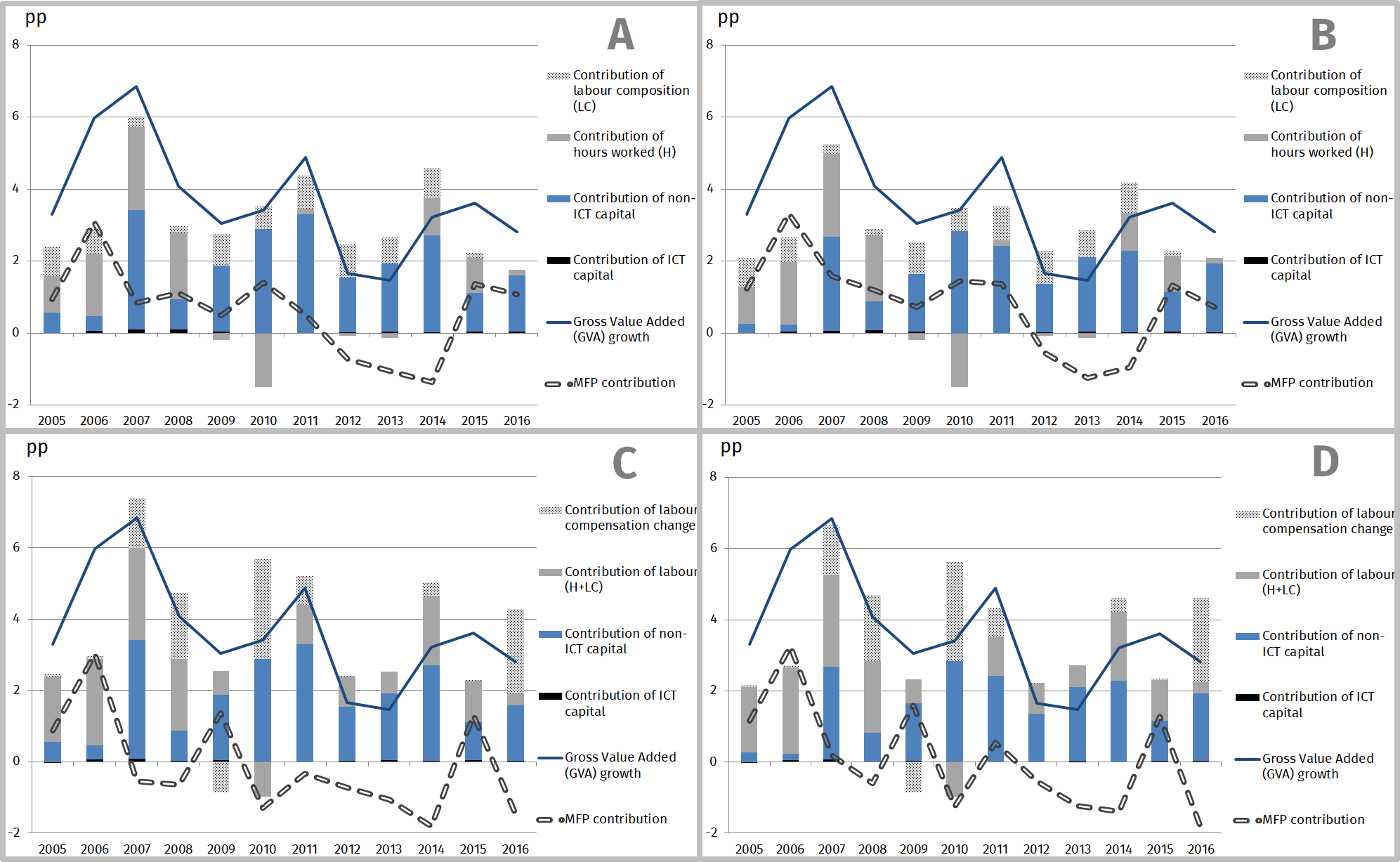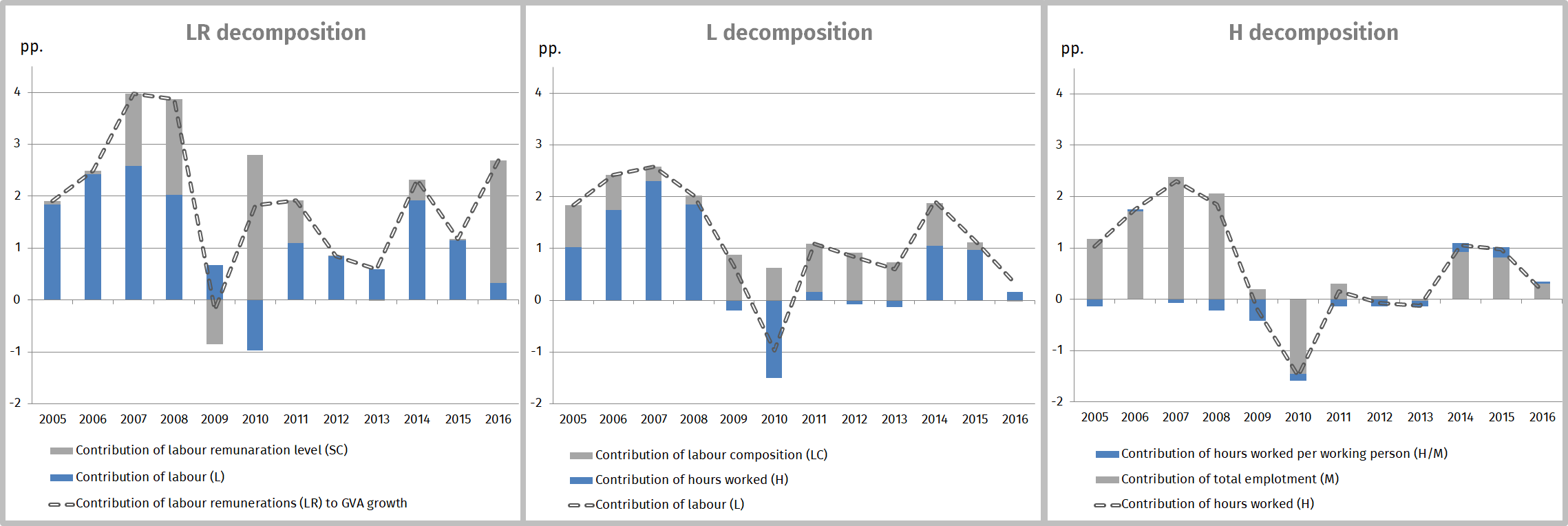Methodology of decomposition in KLEMS productivity accounts for the Polish economy
The Department of Macroeconomic Studies and Finance of the Central Statistical Office of Poland, within the so called „experimental statistics”, is carrying out studies to implement KLEMS economic productivity accounts in Polish conditions. These accounts are based on the neoclassical concept of economic growth decomposition initiated by Robert Solow and developed methodologically by Dale Jorgenson and associates.
The economic growth decomposition in KLEMS accounts can take the shape of a gross value added (GVA) decomposition or a gross output decomposition. For Poland, during the implementation of KLEMS accounts, the GVA decomposition, being the essential part of KLEMS accounts, was performed. It is intended to complement it with gross output decomposition during 2018. When developing the accounts, an enhanced decomposition of the labour factor was carried out in addition.
The KLEMS accounts deliver fundamental macroeconomic and mesoeconomic information (according to NACE 2 subdivisions) on the economy and thus represent an important assisting tool for the economic growth researcher. The decomposition of economic growth allows to identify its sources and therefore allows indirectly to interpret its causes. It can be a base for numerous analyses and studies on economic growth, and also be used for international comparisons with the other countries carrying out these accounts.
GVA decomposition:
In Polish conditions this accounting was done in four methodological versions:
A – Capital without residential capital (without dwellings), labour quality understood as labour composition
B – Capital with residential capital (with dwellings), labour quality understood as labour composition
C – Capital without residential capital (without dwellings), labour quality understood as labour compensation level
D – Capital with residential capital (with dwellings), labour quality understood as labour compensation level

The specifics of Polish dwelling market suggest that in Polish conditions it is appropriate to carry out the decomposition of economic growth without dwellings in the capital stock (graphs and tables A and C). However, for international comparisons they should be included (graphs B and D) since this is the way proceeded for the other countries involved in KLEMS accounting. Labour quality in the traditional KLEMS accounts is understood as labour composition (graphs and tables A and B), i.e. the structure of labour factor by sex, age and education attainment groups. However, changes in labour hourly remuneration levels (graphs and tables C and D) can also be interpreted as changes in labour effectiveness that consider more elements than resulting from labour quality.
Development of labour factor decomposition:
In the traditional KLEMS productivity accounting the labour factor is decomposed into the contributions of hours worked and labour composition. For Poland, were performed, in a hierarchical way, a decomposition of labour compensation (LR) contribution to GVA into the contributions of remunerations level (SC) and labour (L), a decomposition of labour contribution into the contributions of labour composition (LC) and hours worked (H) and a decomposition of hours worked contribution into the contributions of the number of employees (M) and the number of hours worked per employee (H/M).




